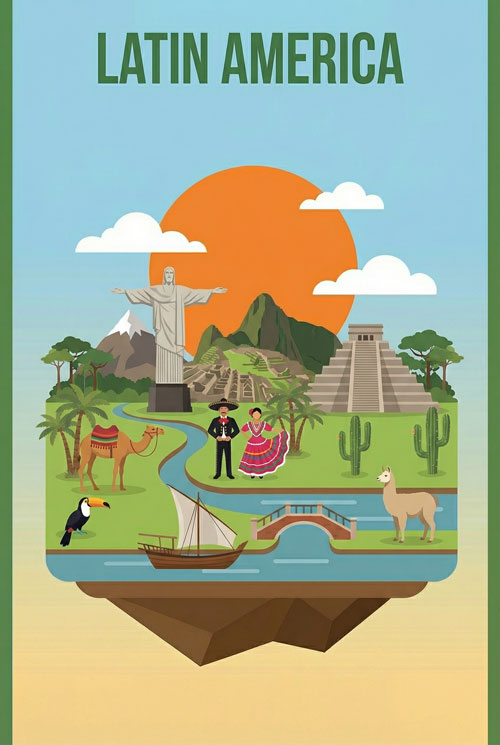eSIM
How To find An eSIM For Mexico
So, you’re heading to Mexico!
Sunshine, incredible food, vibrant culture, ancient wonders… it’s a destination that has it all.
And staying connected is right up there with your passport and sunscreen.
The goal?
You land in Cancún, your phone pings to life, and you’re instantly connected, ready to summon a ride or check into your Airbnb.
But the reality for many can be a bit more… complicated. Perhaps it’s the dreaded “No Service” message at a critical moment, speeds that remind you of dial-up when you’re trying to upload those stunning cenote photos, or the fine print in an “unlimited” plan that bites back when you least expect it.
The truth is, the eSIM market for Mexico is booming, with a dizzying array of providers. This guide is designed to help you find the “best” eSIM for your specific situation.
Things To Be Aware Of When Looking For An eSIM
The appeal of eSIMs is undeniable: scan a QR code and, theoretically, you’re good to go. But this ease of use, heavily promoted by providers, can sometimes mask a more complex reality.
Before you click “buy” on that enticing offer, it pays to be aware of a few common challenges in the Mexican eSIM market.
1. The “Too Good To Be True” Tango You’ve likely seen them – eSIM plans for Mexico offering huge data allowances for what seems like pennies. “Unlimited Data, 30 Days, Only $19.99!” It sounds great, but often, these ultra-low prices hide significant compromises. The “unlimited” data might be aggressively throttled to near-unusable speeds after you consume a surprisingly small initial amount. Or the plan might exclusively use a less reliable, secondary network that struggles outside major urban centers. If an offer seems drastically cheaper than all its competitors, ask yourself: what’s the catch?
2. Nationwide Isn’t Always What It Seems “Nationwide Coverage” is a common claim. But Mexico is a vast and geographically diverse country. We’re talking sprawling cities like Mexico City, remote mountain ranges, expansive deserts, and long, winding coastlines. A provider might technically offer service “nationwide,” but the quality and consistency of that service can vary dramatically depending on which local network(s) their eSIM actually connects to. A plan that works flawlessly in a Cancún resort might leave you stranded with no signal in a smaller colonial town or a national park. Simply put, “nationwide” doesn’t tell the whole story.
3. The Fine Print of Fair Usage Policies The word “unlimited” in data plans is one of the most flexible terms in advertising. Almost every “unlimited” eSIM plan will have a Fair Usage Policy (FUP) tucked away in its terms and conditions. This is critical: the FUP outlines how much high-speed data you truly get. Once you hit that threshold – say, 1GB or 2GB per day, or perhaps 20GB total for the month – your speeds can be drastically reduced, sometimes to the point where even basic Browse becomes a chore.
Imagine Maria, a digital nomad, who chose an “unlimited” eSIM for her month-long stay in Oaxaca. She was relying on it for video calls with clients and uploading large design files. A week in, after what she considered normal usage, her connection slowed to a crawl. Deep in the provider’s T&Cs, she found the culprit: a 20GB high-speed cap, after which speeds were throttled. Her “unlimited” plan had effectively hit a wall, causing significant disruption to her work. This scenario is more common than you’d think.
4. The Phantom Support Menace: When Help Isn’t Helpful When things go wrong with your connection, responsive and knowledgeable customer support is invaluable. Unfortunately, this is an area where some eSIM providers, particularly budget-focused ones, can fall short. You might encounter slow email responses, unhelpful chatbots, or support staff who seem unfamiliar with the specific connectivity landscape in Mexico. A quick search for user reviews often sheds light on the quality of a provider’s customer service – an important factor to consider.
Being aware of these potential issues isn’t about being negative; it’s about being prepared. It’s the first step in moving from a hopeful buyer to an empowered eSIM user. Now, let’s look at the technical side.
Network Alliances, True Speeds, and the Fine Print That Defines Your Mexican Connection
To make a genuinely informed choice, you need to understand a bit about what’s going on behind the scenes. The advertised features are one thing; the underlying technology and contractual details are what will truly shape your connectivity experience in Mexico.
1. Who’s Really Powering Your eSIM? When you buy an eSIM from a global provider, that provider doesn’t typically own the cellular infrastructure in Mexico. Instead, they have roaming agreements or partnerships with local Mobile Network Operators (MNOs). In Mexico, the key players are:
- Telcel: Generally considered the market leader, Telcel (owned by América Móvil) usually offers the most extensive coverage across Mexico, reaching many rural and remote areas where other networks may not – this is who we use at for our Mexico eSIMs plans.
- AT&T Mexico: A strong competitor, especially in urban centers and along major tourist routes. AT&T has invested heavily in its Mexican network and provides reliable service in many parts of the country.
- Movistar: Another established MNO, Movistar offers competitive services, though its coverage footprint, particularly outside of cities, might be less comprehensive than Telcel or AT&T.
- Altan Redes (Red Compartida): This is an interesting and important player. Altan Redes operates a wholesale 4.5G LTE network, meaning they build and maintain infrastructure and then lease capacity to various Mobile Virtual Network Operators (MVNOs). Many cost-effective eSIMs targeting Mexico utilize the Altan network, which has been rapidly expanding its coverage, often focusing on improving connectivity in underserved areas.
The critical question for any eSIM you consider is: which of these local networks will it use? Some eSIMs might offer access to multiple networks, automatically switching to the strongest available signal, while others might be restricted to a single partner. This information can be a bit buried, but it’s crucial.
2. Telcel: There’s a good reason why many travelers who prioritize widespread coverage in Mexico often seek out solutions that connect to Telcel’s network. If your plans include venturing off the beaten path, exploring remote regions, or long road trips through less populated areas, Telcel’s reach often provides the greatest chance of staying connected. However, this premium coverage can sometimes mean slightly higher prices for eSIM plans that guarantee Telcel access.
3. Altan Redes: Don’t overlook Altan Redes. Many innovative and competitively priced eSIMs are powered by the Altan network. In areas where Altan has established strong coverage (and this is constantly growing), users can experience excellent performance, often at a lower cost than plans on other networks. The key is aligning Altan’s strengths with your itinerary. If you’re primarily staying in cities, larger towns, or regions where Altan is known to have a robust presence, an Altan-based eSIM could be an excellent and economical choice.
4. Speed Realities vs. Advertised Fantasies: What to Expect from “5G” or “LTE” Many eSIMs will highlight “5G speeds” or “High-Speed LTE.” While Mexico does have expanding 5G infrastructure, particularly in major cities and through carriers like Telcel and AT&T, it’s not yet a universal standard everywhere. More commonly, you’ll be using reliable 4G/LTE networks, which are more than sufficient for most travel activities, including streaming, video calls, and navigation.
More important than the “5G” label is the actual, consistent speed you’ll experience. This is influenced by several factors: network congestion in your specific location (think a crowded beach or festival), your phone’s capabilities, and, critically, any speed caps or throttling policies imposed by your eSIM provider after you hit certain data usage limits (as per their FUP). Also, consider upload speeds if you plan on sharing large video files or doing a lot of social media posting with high-res content.
5. The Data Plan: Let’s get into the nitty-gritty of the plan itself:
- True Cost per GB: Don’t just look at the total price and total GB. Calculate the cost per high-speed GB you’re actually guaranteed before any throttling kicks in.
- Validity Period: When does the plan start – upon activation, or when you first connect in Mexico? Does a “day” mean a full 24 hours from activation, or does it expire at midnight on the last day, regardless of your start time? These details affect the true value.
- Top-Up Options: If you exhaust your initial data allowance, how easy and affordable is it to add more? Can you do it quickly through an app, or is it a complicated process?
- Hotspot/Tethering Allowance: Can you share your eSIM’s data connection with your laptop, tablet, or travel companions? Some plans restrict tethering or offer a separate, often smaller, data allowance for hotspot usage. If this is important to you, verify the specifics.
(Conceptual Rich Media Placement: A “Deconstructed eSIM Plan” Infographic would be highly effective here. It could visually break down a sample plan, pointing out: 1. Partner Networks in Mexico. 2. High-Speed Data Limit (before FUP throttling). 3. Throttling Speed. 4. True Validity Period. 5. Hotspot Rules. This would give readers a clear, visual checklist for comparing plans.)
Understanding these technical details isn’t about becoming an expert in telecommunications. It’s about knowing what to look for and which questions to ask so you can see past the marketing slogans and choose a plan that genuinely meets your technical requirements. But technical suitability is only half the equation. The other half is you.
Different Types Of Travelers, Which One Are You?
Now, let’s connect all this technical understanding to the most important variable: your personal travel style and needs.
The “best” eSIM isn’t a universal product; it’s the one that best fits your specific Mexican adventure.
We’ve sketched out a few common traveler archetypes. See if one (or a combination) resonates with you:
1. “Digital Nomad Dean/Diana”: The Long-Stay, Work-Critical Professional
- Their Trip: Dean plans to work remotely from Mexico for two to three months, basing himself in cities like Oaxaca, Guadalajara, and perhaps a coastal town known for good infrastructure. His work involves daily video conferences, cloud-based collaboration, and transferring large files. For Dean, reliable, high-speed internet isn’t just a convenience – it’s essential for his income.
- Connectivity Priorities: Unwavering reliability; generous high-speed data (think 50GB+ per month, ideally with clear FUP terms); good upload speeds; robust hotspot/tethering capabilities; responsive customer support for quick troubleshooting.
- eSIM Strategy: Dean should prioritize eSIMs that explicitly state strong partnerships with Telcel due to its generally superior coverage, especially if he plans to explore beyond major city centers. He needs to scrutinize FUPs with extreme care, possibly favoring plans with a large, clearly defined high-speed data allowance over vaguely “unlimited” ones. He might even consider a primary eSIM for general use and a backup (perhaps a local SIM or another eSIM on a different network) for critical work periods, ensuring redundancy.
2. “Adventure Seeker Alex/Alexa”: The Explorer of Cities and Wilderness
- Their Trip: Alexa is embarking on a six-week backpacking journey, mixing stays in vibrant cities with treks in national parks, visits to remote archaeological sites, and explorations of lesser-known coastal villages. She needs connectivity for navigation, booking accommodation on the go, occasional social media updates, and emergency communication.
- Connectivity Priorities: The broadest possible network coverage (signal in remote areas is key, even if speeds aren’t always blazing); reliability over sheer data volume; reasonable battery impact from the eSIM; flexible plans or easy top-up options.
- eSIM Strategy: Alexa would also greatly benefit from an eSIM leveraging Telcel’s network for its extensive reach. For her, knowing she has the best chance of a signal when navigating a remote trail or arriving in a small town is paramount. She might look for plans with shorter validity periods that she can renew as needed, or a single plan with a moderate data allowance that covers her entire trip. Having offline maps (like MAPS.ME or Google Maps offline areas) downloaded is still a crucial backup for Alexa.
3. “Resort Relaxer Ricky/Rita”: The Sun, Sand, and Seamless Streamer
- Their Trip: Ricky and his family are off for a 10-day all-inclusive holiday in a popular resort area like Cancún or Puerto Vallarta. Their connectivity needs are mainly within the resort and nearby tourist zones for streaming shows for the kids, sharing photos on social media, checking emails, and perhaps booking a local tour. Ease of setup is a top priority.
- Connectivity Priorities: Very simple activation process; good, stable performance in major tourist hubs; cost-effectiveness for a shorter trip (7-14 days); enough data for their social media, streaming, and light Browse needs.
- eSIM Strategy: Ricky and Rita can often find excellent value and performance with eSIMs that partner with Telcel, AT&T Mexico or Altan Redes-based MVNOs, as these networks generally provide strong service in concentrated tourist areas. Since their travel will likely be geographically limited, Telcel’s expansive nationwide coverage might be more than they need and potentially more expensive. They should look for plans with clear data amounts (e.g., 10-20GB for their trip) and ensure the provider has a reputation for a straightforward setup process. Many global eSIM brands offer specific “Mexico Tourist” or “Latin America” plans tailored for this type of traveler.
4. “Budget Explorer Ben/Bella”: The Cost-Conscious Connector
- Their Trip: Ben is backpacking through southern Mexico for a month on a very tight budget. He needs data for essential tasks: using offline maps with occasional online checks, WhatsApp for communication with hostels and family, looking up bus schedules, and some light research for his next stop. He’s willing to tolerate some inconvenience or slower speeds if it means significant cost savings.
- Connectivity Priorities: The absolute lowest possible price for a functional amount of data; basic reliability for essential apps; flexibility in plan duration or renewal.
- eSIM Strategy: Ben needs to be a sharp eSIM shopper. He should meticulously compare the true cost per GB, paying close attention to FUPs on any ultra-cheap “unlimited” plans to see if the throttled speed is still usable for his basic needs. He might find some Altan Redes-based MVNOs offer the best balance of price and essential service. He should also be realistic: in very remote areas, even the best budget plan might struggle, so having critical information (like hostel addresses and maps) accessible offline is non-negotiable. For Ben, the core question is always, “Is this plan cheap enough to justify any potential trade-offs in performance or coverage?”
Are You a Hybrid? Most of Us Are. You’re probably reading these and thinking, “I’m a bit of this one, and a bit of that one.” Few travelers fit into a single, neat category. Perhaps you’re a digital nomad who also loves weekend adventure hikes. Or you’re on a budget but still need reliable enough connectivity for a few crucial work check-ins.
The key is to identify your primary connectivity needs and priorities for your specific trip to Mexico. What’s non-negotiable for you? Is it flawless video conferencing for work? Is it having a signal on a remote trail? Or is it simply getting the most data for the fewest pesos? Answering these questions honestly will guide you to the eSIM strategy that’s right for your journey.
The Bigger Picture
Stepping back for a moment, the process of choosing an eSIM for Mexico tells us something interesting about modern travel. We are increasingly reliant on digital connectivity to navigate, communicate, work, and share our experiences. This deep dive into eSIMs highlights the need for what we might call “digital travel literacy.”
The Empowered Traveler in a Complex Market The fact that you’re seeking out this level of detail means you’re part of a growing wave of travelers who are no longer passive consumers of whatever connectivity options are thrown their way. This is a positive trend. It pushes the eSIM industry and network providers towards greater transparency, better service, and more genuine value. Your informed choices contribute to a healthier market.
What Might the Future Hold? The eSIM landscape is evolving rapidly. Here are a couple of possibilities for what’s next:
- The Optimistic Outlook: We could see increased competition leading to even clearer plan structures, more provider accountability, and perhaps even AI-driven eSIMs that intelligently select the best available local network in Mexico without you lifting a finger. Truly global, flat-rate data plans that offer seamless, high-quality service everywhere, including all corners of Mexico, might become more common and affordable.
- The More Realistic (for now) Outlook: The market will likely continue to have a mix of excellent, good, and not-so-good providers. Misleading marketing and opaque terms may persist. In this scenario, the need for travelers like you to remain critical, do your research, and understand the underlying factors will continue to be essential.
What This Means For…
- The Travel Industry: Reliable connectivity is now a baseline expectation for many travelers. Hotels, tour operators, and transport providers who understand this and can offer guidance or facilitate good connectivity solutions will enhance their customers’ experiences.
- eSIM Providers & Tech Innovators: The challenge is clear: move beyond just selling data towards creating genuinely user-centric experiences. This means transparent pricing, honest capability claims (especially regarding coverage and speed in specific regions like Mexico), robust network partnerships, and responsive customer support.
- You, the Traveler: This knowledge equips you to make smarter choices, avoid common frustrations, potentially save money, and ensure that your digital tools are a true asset to your Mexican adventures, not a source of stress.
Ultimately, your quest for the right eSIM is about ensuring technology serves your travel dreams, allowing you to immerse yourself fully in the wonders of Mexico.
Final Thoughts for Your Mexican Adventure
So, as we wrap up this strategic tour of the Mexican eSIM landscape, what’s the final word?
The “best eSIM for Mexico,” as we’ve discovered, isn’t a single, definitive answer you’ll find in a top-ten list. It’s a personalized solution, carefully constructed by you, based on a clear understanding of your travel plans and a critical assessment of what providers are truly offering.
Let’s quickly recap the core principles for making that informed choice:
- Interrogate the “Unlimited” and “Nationwide” Claims: Always look for the Fair Usage Policy to understand true high-speed data limits. “Nationwide” needs to be backed by clarity on which local Mexican networks (Telcel, AT&T, Altan Redes) are actually being used.
- Know Your Networks: In Mexico, Telcel generally offers the broadest coverage, AT&T is strong in urban areas, and Altan Redes provides growing coverage often leveraged by value-focused MVNOs. Match these strengths to your itinerary.
- Align with Your Traveler Profile: Whether you’re a data-hungry digital nomad, an off-grid adventurer, a resort-hopper, or a budget backpacker, your primary needs should dictate your eSIM priorities.
- Look Beyond the Price Tag: Factor in reliability, coverage in your specific destinations, realistic data speeds (especially for work or streaming), ease of top-up, hotspot capabilities, and the quality of customer support.
The world of travel technology is always in motion, and eSIMs are a fantastic example of how innovation can simplify and enhance our journeys. By approaching your selection with a critical yet open mind, you’re not just purchasing a data plan; you’re investing in a smoother, more connected, and ultimately more enriching experience as you explore the incredible diversity of Mexico.
Before you embark, take a few moments to reflect: What are your non-negotiables for connectivity on this particular trip?
What’s your tolerance for potential issues versus your need for absolute, seamless service? Use the framework we’ve discussed as your guide. Question the marketing, demand clarity where it’s lacking, and remember that the ideal eSIM is the one that empowers your unique way of experiencing all that Mexico has to offer.













